SpaceX and a Fireball!
11/10/2021. Tonight I tried Jupiter and Saturn with the ASI462MC and revisted the Moon, too. Those efforts are detailed over on the "Howling at the Moon" section.
I pulled up the Photographer's Ephemeris and took a good guess at where in the sky to look for tonight's SpaceX launch. The high ground on the north side of our cul de sac looked about right. The rocket would be low in the southeast, just above the pinetops as seen across the asphalt lagoon. If I could see anything at all, of course.
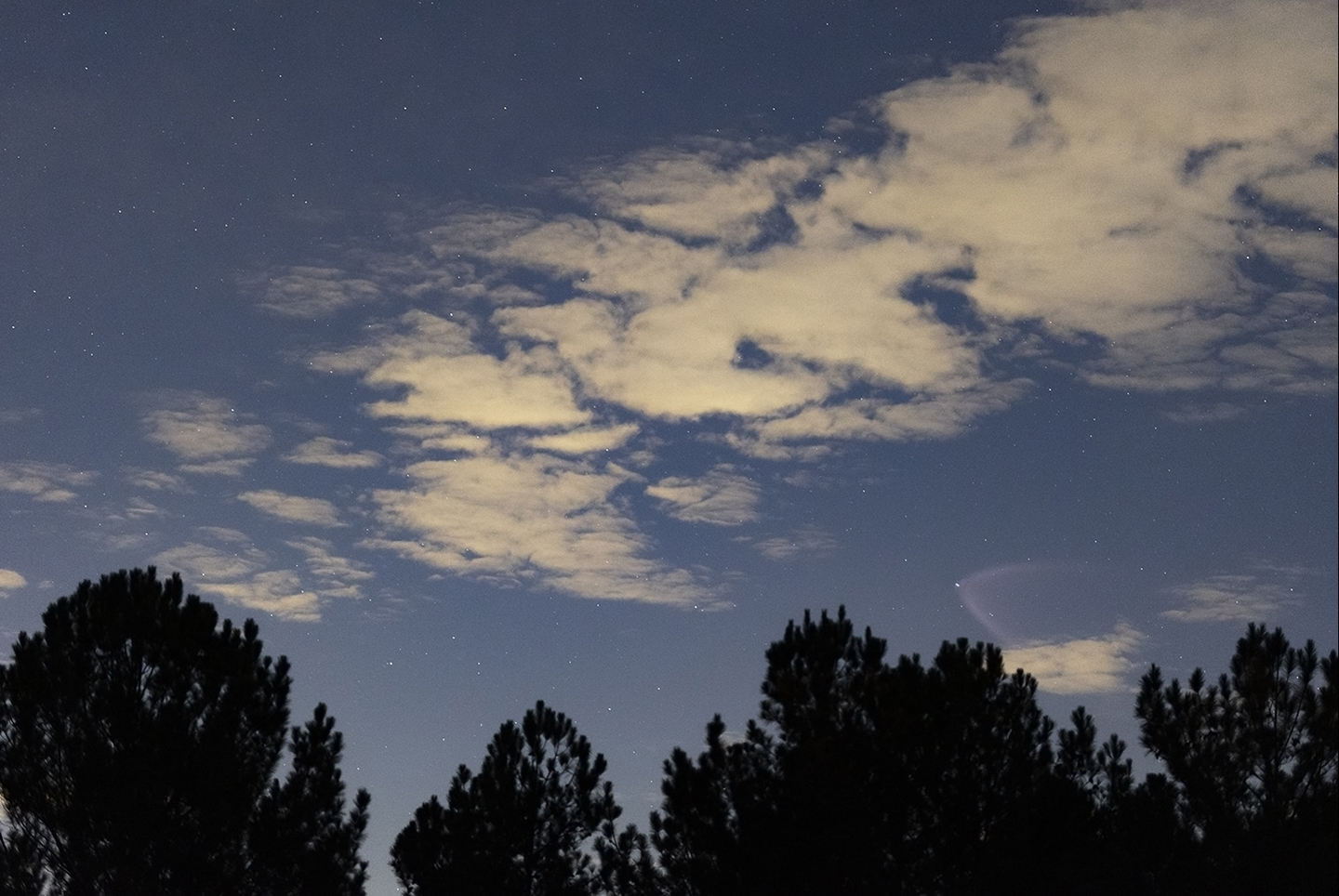
I took my phone along to hear if there was a last minute cancellation and to verify liftoff. SpaceX sent a 4-person crew to the ISS at 9:03 PM. Clouds lit by the quarter moon (and Hickory and Charlotte) were moving in from the west. For the next few minutes, I scanned the southern horizon and saw nothing. Then I looked through the R6's electronic viewfinder and the Sigma 105mm F1.4 at ISO 6400 and was astonished to see, well, a rocket already climbing high in the southern sky. It took a few seconds to remember that I was, in fact, looking through a camera and that I ought, really, to consider pushing the shutter button. The first frame (above) was a 1 second exposure six and a half minutes after liftoff. The rocket blurred badly, a blur I removed in Photoshop. I reset the camera to ISO 25,600 and 1/8 second and kept it there for the rest of the event. I just kept pushing the "take the picture" button on a wired release (I could've locked it "on" but, well, I didn't).
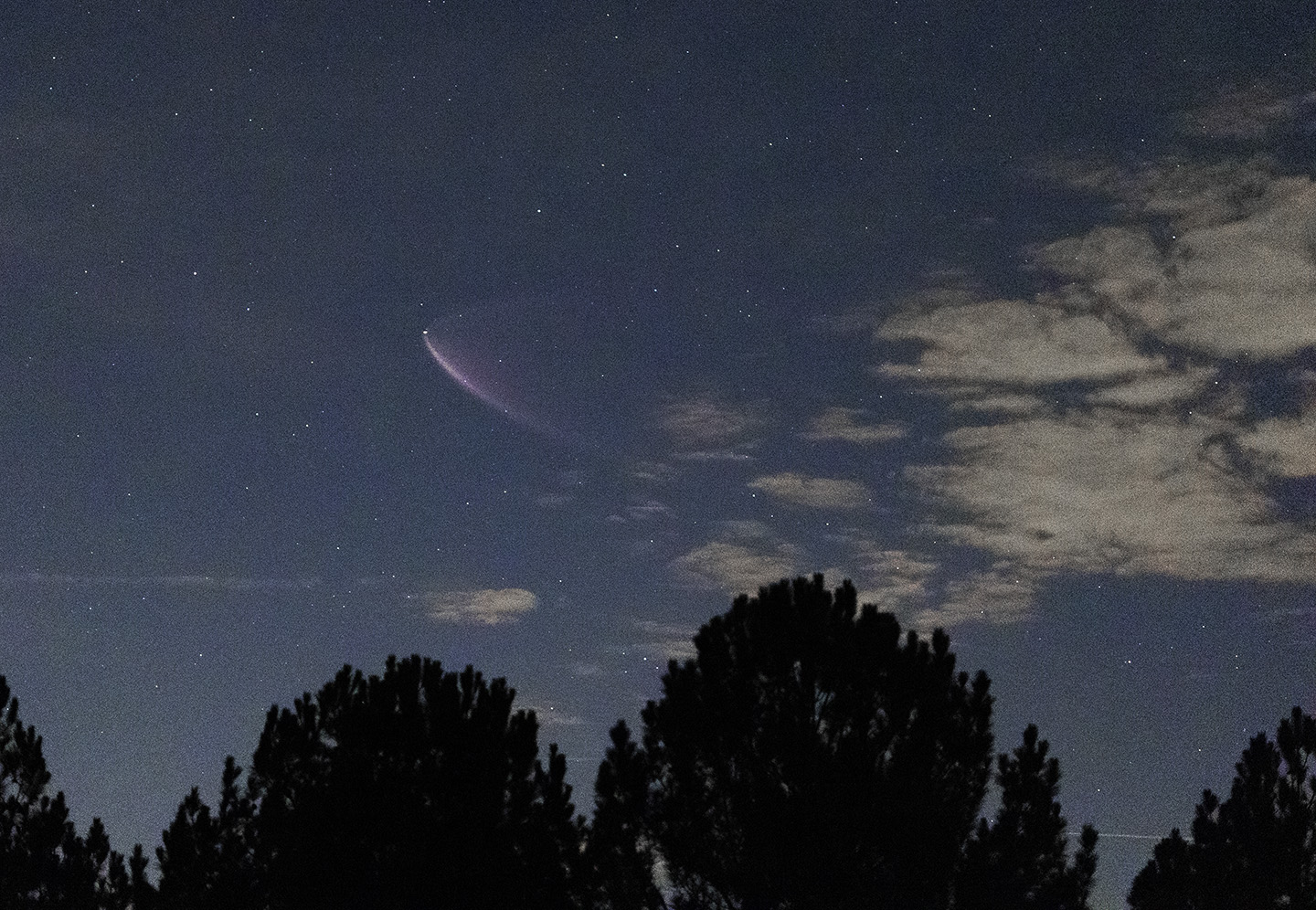
The rocket climbed to just about 15 degrees above my southeast horizon and then maintained that elevation as it moved up the eastern seaboard passing through due east and on a few degrees farther north. That took about two minutes (I could check the timestamps or watch SpaceX's replay, but let's just say two minutes). Its plume eventually began to diminish in size and drop lower in the sky (slight mystery: near as I can tell, SECO occured before the plume passed behind the pines to the northeast -- why did a plume continue after the second stage engine stopped firing?). At one point, I scrambled down the bank and up the road several yards to keep the rocket in view (and popped a muscle in my left calf in the process -- it is possible to hustle along using a tripod fvor a cane while staring at the sky and protecting fancy glass). I hurried to set up and renewed my obsessive pushing of the "take a picture" button.
Almost instantly, a brilliant Taurid fireball (details from the AMS) fell through the field of view while I watched. It was surely the most brilliant meteor I have ever seen. The terminal flash lit the eastern sky and turned the cirrus bright green.
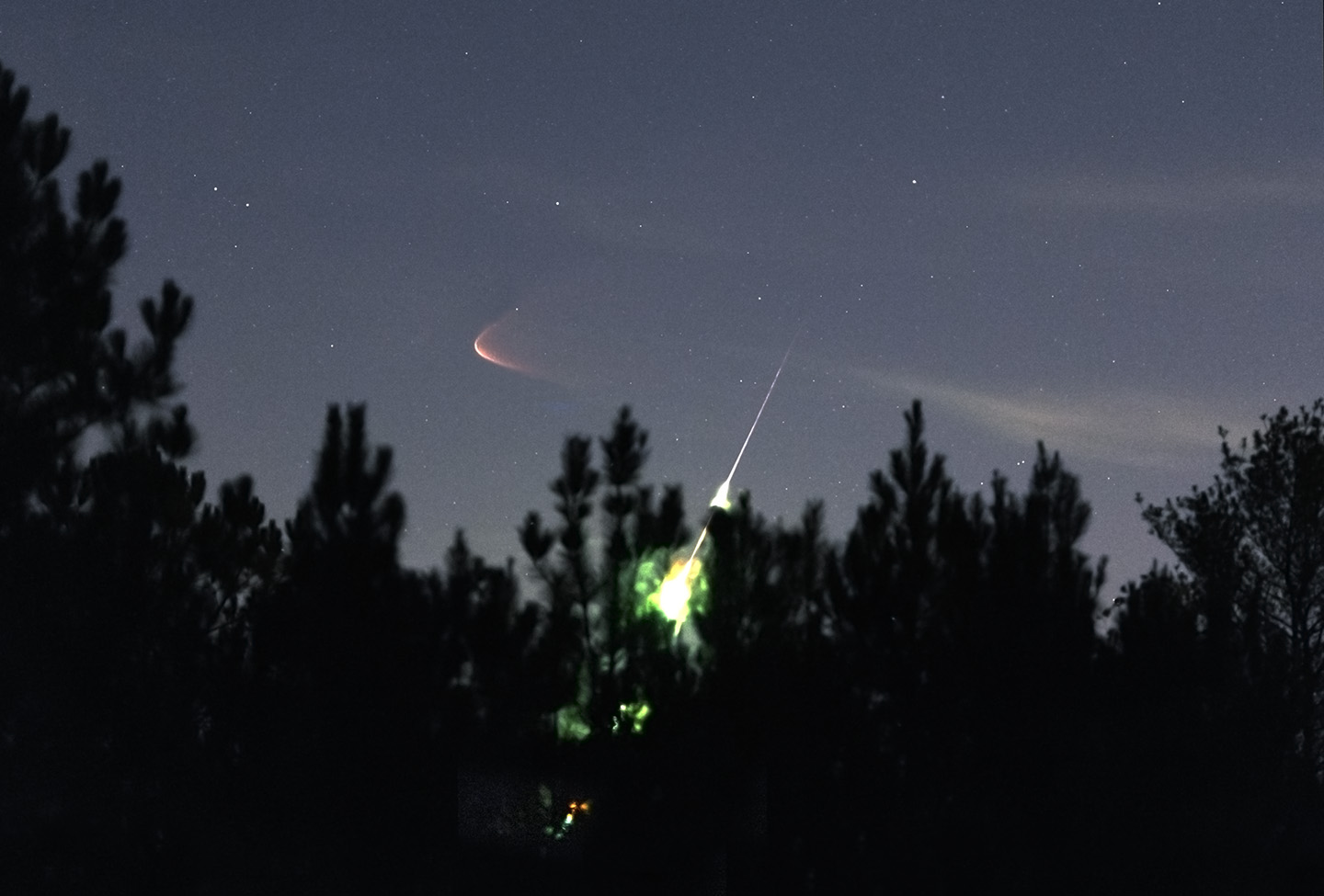
Click the Pic to See it at it's Best!
That's five frames blended to show the entire path of the meteor. I aligned them all on the stars and kept the sharpest rocket image from the set. Note that the upper trail of the meteor is actually its smoke train and not the bright streak of the meteor itself. My first exposure began with the bright bit just above the top of the pine.
I guessed that the part of the flight I could see maxed out around magnitude -9, but after it dropped below the tree-line its final flash had to be much, much brighter. That's what a 45 pound meteoroid going 33,000 mph, entering the atmosphere 48 miles above Greenvile, NC, and disintegrating 28 miles above Macclesfield will get you. That's about 200 miles to my east, about halfway to the rocket I was busy watching. It's worth recalling that the Tunguska impactor could have been a Taurid fireball.
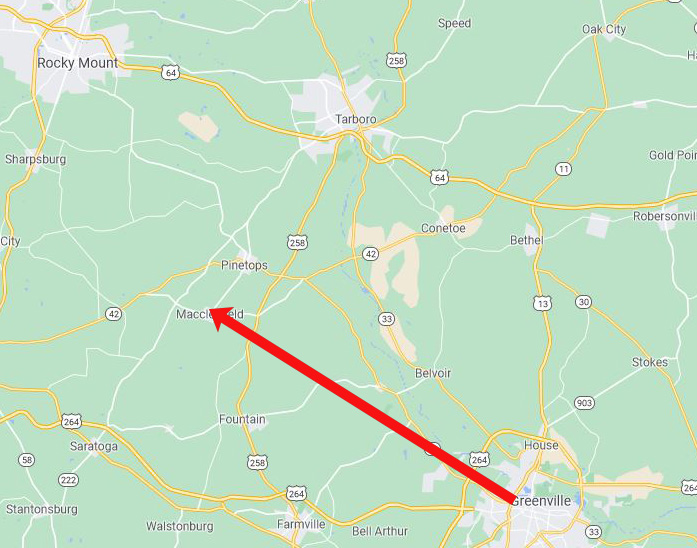
I put together a pair of video clips. One shows the rocket sailing across the southeastern sky. The other begins with the fireball and shows the rocket gliding out of view to the north through western Orion. I sent the combined clips everywhere I could think of. Roll tape...
WECT in Wilmington and WBTV in Charlotte both aired the fireball bit from that. I'm closing in on ten thousand views on Vimeo. That counts as "viral" in my limited world.
Brad Panovitch, a Charlotte meteorologist (ironic that), has done some astonishing iPhone photos of a previous SpaceX launch when the lighting was better. Be ready! There's a possibility of a more visible flight in early December.
I took several of my frames and stared at Project Pluto's Guide 9.1 software, identified the starfields, and measured altitudes and azimuths in preparation for the next time. The annotated photos are huge. After I've refined them and reduced them to a practical size, I'll post them here for reference.
I'm squinting at public viewpoints from which various compositions could be tried, measuring fields of view, drawing sightlines and trajectories and so on. I have ideas.
11/16/2021. Here are a couple of finder charts for SpaceX flights up the east coast as seen from western NC, specifically, for Rutherford College, NC. The altitudes and azimuiths are probably useful for a wide variety of flights for several miles around, just squint and allow for parallax as needed. I've left several images of the rocket plume in the image for scale and location. The stars themselves are only good when the local sidereal time is near 23:55.
Looking south (1900 pixels, expand for legibility):
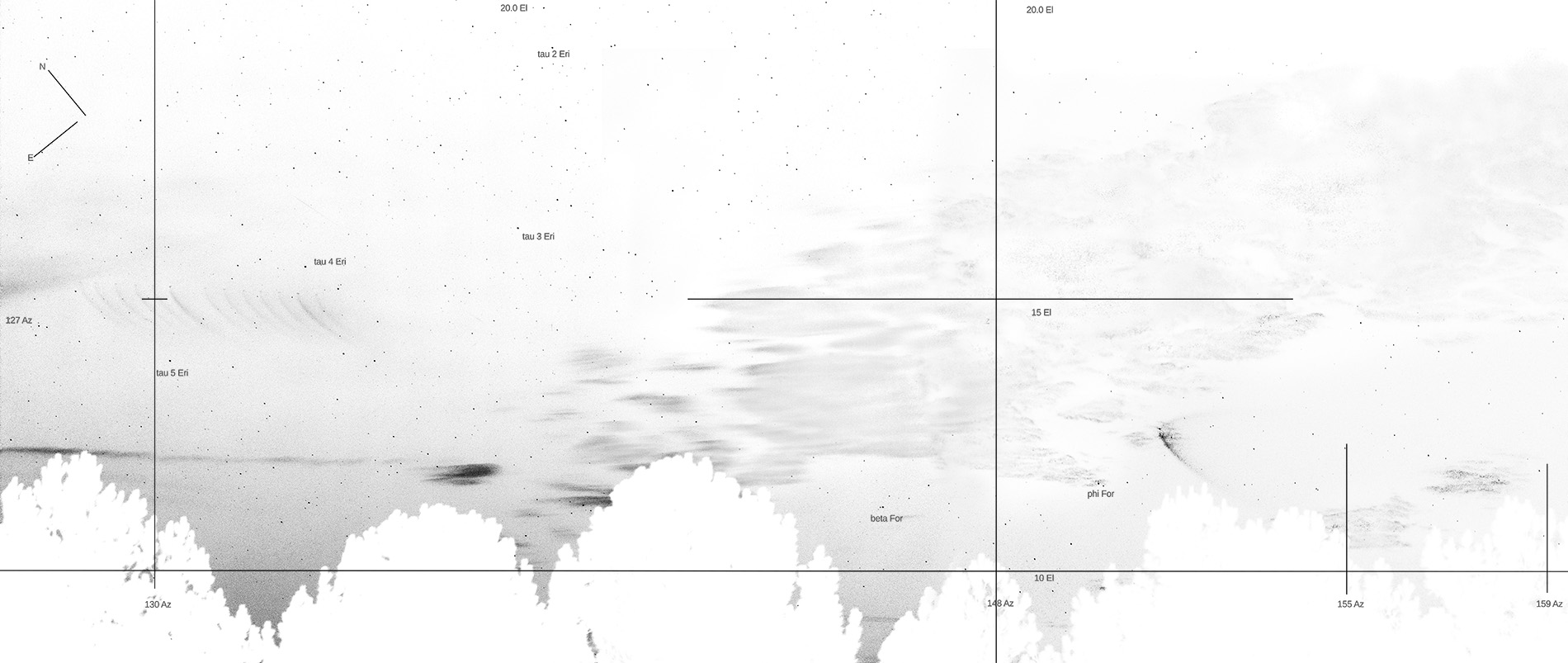
Note that KSC is below and beyond the frame to the right at AZ 176 and some moderately negative elevation. Rockets clear my ideal horizon (neglecting refraction) 2 minutes and 20 seconds into flight at an altitude of about 50 km near AZ 166; first stage cut-off is at 90 km, 2:45 into flight; entry burn prior to first stage landing is at 55 km, near AZ 159).
Looking east (1400 pixels):
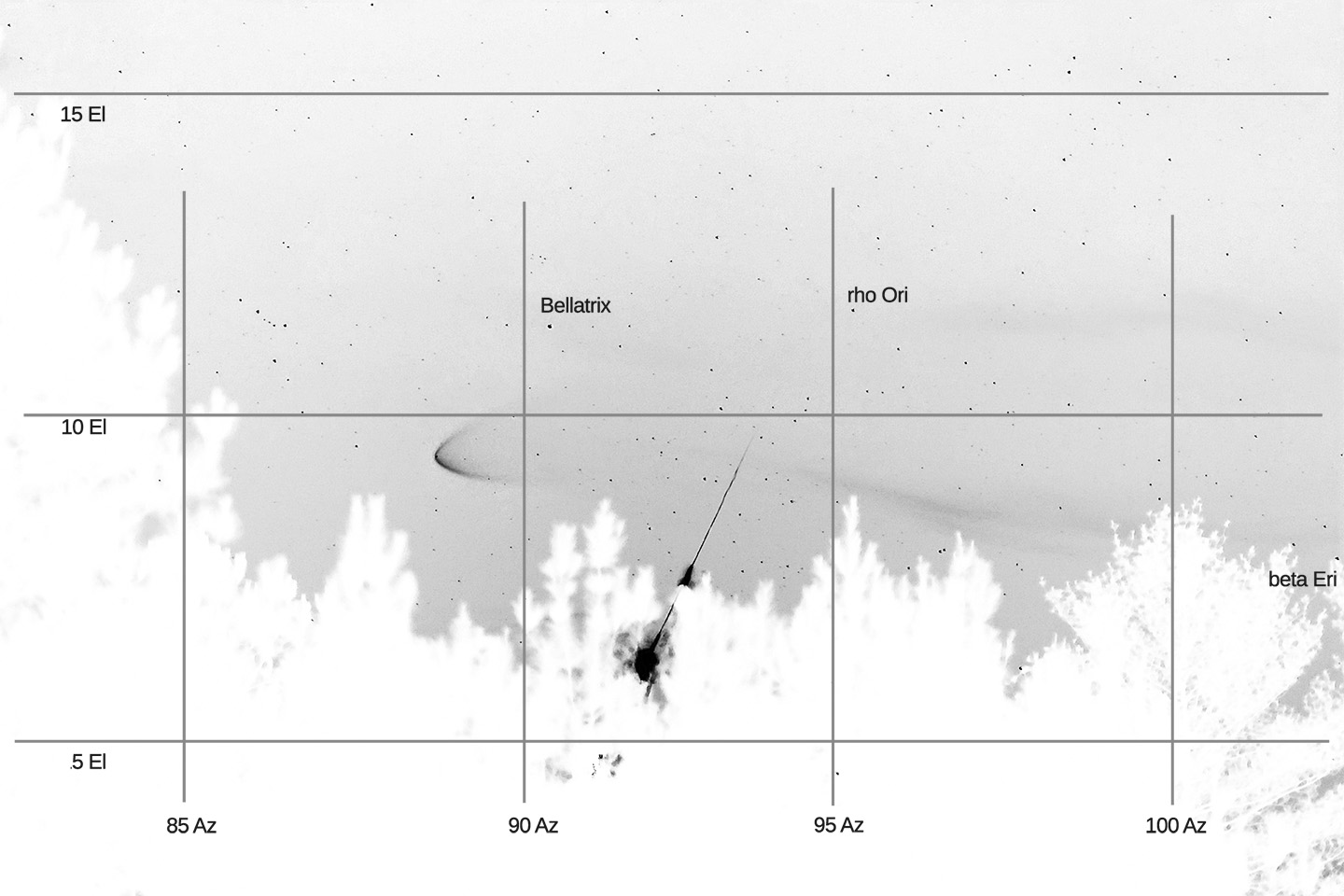
The missing azimuths to the southeast represent the intermission when I was stumbling around on the side of a hill getting in position to watch the second part of the show.